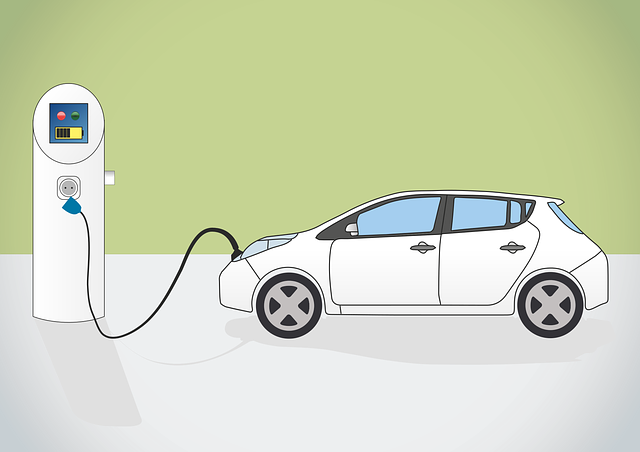Looking to register your car in California? This comprehensive guide walks you through every step, from understanding key requirements for car registration in the Golden State to completing the DMV VIN verification process. Gather essential documents, visit a local DMV office or utilize online services, and master the application process. Once approved, pay fees and receive your vehicle’s official registration. Streamline the experience with these straightforward instructions, tailored for California drivers.
- Understand the Requirements for Car Registration in California
- Gather Necessary Documents for DMV VIN Verification
- Visit a California DMV Office or Use Online Services
- Complete the Registration and Title Application Process
- Pay the Required Fees and Receive Your Vehicle's Registration
Understand the Requirements for Car Registration in California

Before registering your car in California, it’s crucial to understand the specific requirements. The California Department of Motor Vehicles (DMV) mandates several steps for ensuring a smooth registration process. One key component is the DMV VIN verification, which confirms the vehicle’s identity using its unique Vehicle Identification Number (VIN). This process helps prevent fraud and ensures that all cars on California roads are legitimate.
Additionally, you may opt for a convenient alternative to traditional DMV visits: mobile VIN inspection or verification services. These mobile vin verifiers can perform the necessary checks remotely, saving you time and effort. By utilizing these modern options, such as a mobile vin verifier, you can streamline the registration process, making it easier than ever to get your car registered in California.
Gather Necessary Documents for DMV VIN Verification

Before heading to the DMV for VIN verification, make sure you have all the essential documents ready. This process requires a valid driver’s license or ID, proof of vehicle ownership (such as a title or purchase agreement), and your vehicle’s registration papers. Additionally, for a seamless experience, bring along any previous insurance records or proof of liability coverage.
For those opting for a mobile vin inspection or vin inspection service, gathering these documents in advance is equally crucial. These services often allow you to skip the lines at the DMV by providing an on-site verification process. Ensure your documentation is accurate and up-to-date to avoid any delays during the registration procedure.
Visit a California DMV Office or Use Online Services

In California, registering a car involves either visiting a DMV (Department of Motor Vehicles) office or utilizing online services. For those who prefer a more traditional approach, heading to a local DMV is a straightforward option. You’ll need to bring essential documents such as proof of identity, vehicle ownership, and insurance. An alternative method is to leverage California’s digital infrastructure by conducting the registration process online. This convenience allows you to avoid lengthy waiting times at the DMV while ensuring all necessary steps for a successful car registration are completed.
If opting for an online route, one crucial step involves performing a DMV VIN (Vehicle Identification Number) verification. This can be achieved through various means, including using a mobile vin verifier, which simplifies the process by allowing you to check your vehicle’s history from the comfort of your smartphone. By verifying the VIN online, you gain access to essential information that ensures the car’s authenticity and helps in identifying any potential issues before registration.
Complete the Registration and Title Application Process

To complete the registration and title application process in California, you’ll need to follow a series of steps outlined by the Department of Motor Vehicles (DMV). Start by gathering all necessary documents, including your vehicle’s registration from the previous state, proof of insurance, and identification. Next, visit your local DMV office or use their online services to initiate the process. During this step, you’ll be required to conduct a DMV VIN verification, which ensures the vehicle’s identity through its unique Vehicle Identification Number (VIN).
This process can be streamlined with a mobile VIN inspection service that allows you to verify your car’s history remotely. This not only saves time but also provides peace of mind by confirming that your vehicle is free from any hidden issues or discrepancies. Once the VIN verification and all other requirements are met, the DMV will issue a new registration certificate and title, officially making your car registered in California.
Pay the Required Fees and Receive Your Vehicle's Registration

After completing your vehicle’s registration application, the next step is to pay the necessary fees and receive confirmation of your car’s registration. The California Department of Motor Vehicles (DMV) will process your application and conduct a thorough vin inspection to verify the vehicle’s identity and history. This involves checking the Vehicle Identification Number (VIN), which is unique to each car, against national databases to ensure it has not been reported stolen or had outstanding issues.
Once the dvm completes its vin verification using either a mobile vin verifier or manual inspection, they will process your registration request. This usually involves generating a unique registration certificate and issuing a license plate for your vehicle. You can typically pay the fees online or in person at any DMV field office, and you’ll receive your official registration documents upon completion of the transaction.
Registering your car in California is a straightforward process that requires understanding the necessary steps and gathering the right documents. By following these guidelines, including the crucial dvm vin verification, you can efficiently complete the registration and title application process at a DMV office or through online services. Once approved, ensure you pay all required fees to receive your vehicle’s official registration, enabling smooth and legal operation on California’s roads.
